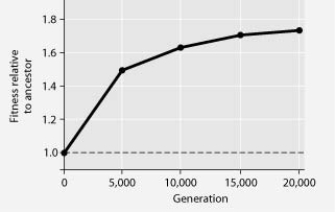Multiple Choice
In this eight-year experiment, 12 populations of E. coli, each begun from a single cell, were grown in low-glucose conditions for 20,000 generations. Each culture was introduced to fresh growth medium every 24 hours. Occasionally, samples were removed from the populations, and their fitness in low-glucose conditions was tested against that of members sampled from the ancestral (common ancestor) E. coli population. 
-If the experimental population of E. coli lacks an F factor or F plasmid, and if bacteriophages are excluded from the bacterial cultures, then beneficial mutations might be transmitted horizontally to other E. coli cells via ________.
A) sex pili
B) transduction
C) conjugation
D) transformation
Correct Answer:

Verified
Correct Answer:
Verified
Q11: Which statement about the domain Archaea is
Q14: Biologists sometimes divide living organisms into two
Q18: In a hypothetical situation, the genes for
Q30: Which of the following involves metabolic cooperation
Q38: While examining a rock surface, you have
Q62: Which of the following statements is not
Q63: In this eight-year experiment, 12 populations of
Q68: The following table depicts characteristics of five
Q71: In this eight-year experiment, 12 populations of
Q72: Nitrogenase, the enzyme that catalyses nitrogen fixation,